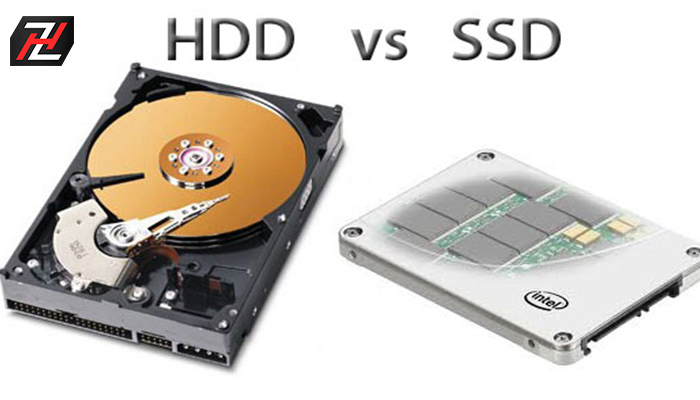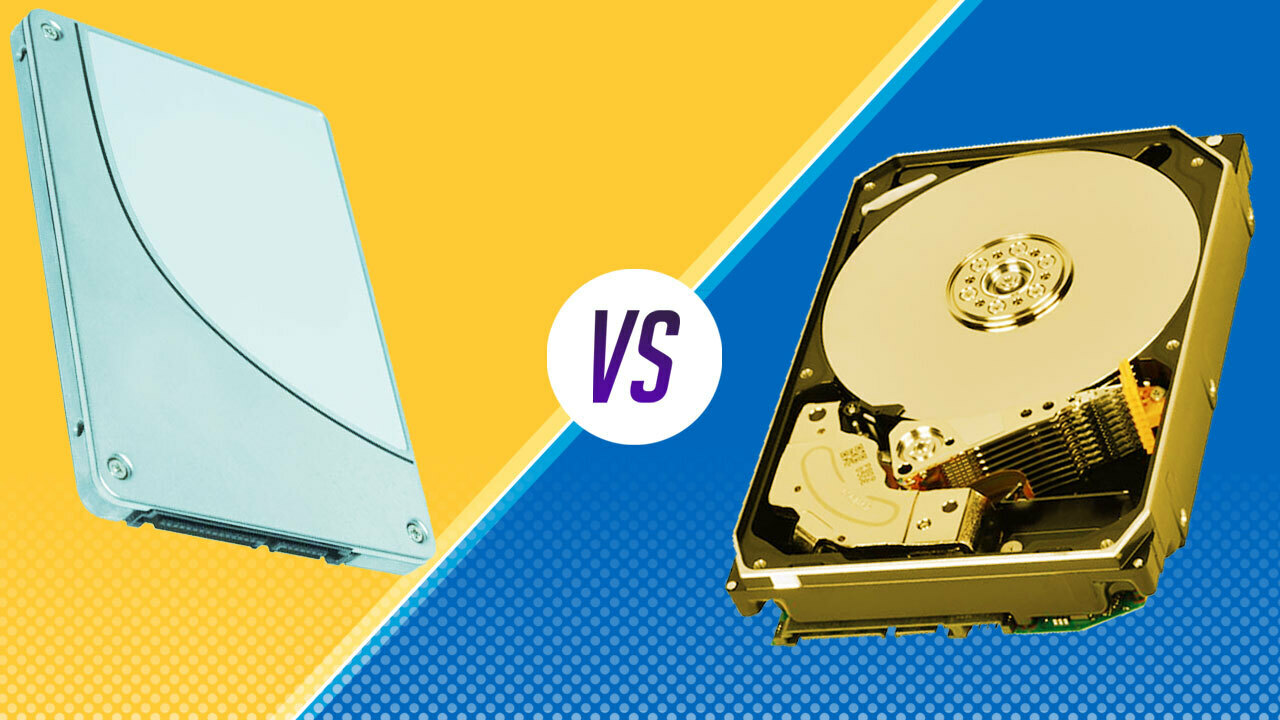TYPES OF HARD DRIVE
Types of hard drives
Types of hard drives: A computer hard drive is a device that stores all software installed on the computer as well as all data files created and used by this software.
This includes any data you’ve created and downloaded, such as photos and music. A hard disk or hard drive is a form of permanent storage rather than temporary memory like random access memory (RAM).
When you turn off the computer, the files are safely saved on the drive so you can use them again the next time you start your computer.
There are two types of hard drives: HDD (hard disk drive) and SSD (solid state drive). In the following, we fully describe the types of hard drives, HDDs, and SSD hard drives.

Types of hard drive capacity
Experts believe that 16 terabytes of storage space will be the maximum capacity required to meet the needs of even the most demanding computer users in the future. Of course, there was a time when 16GB was all you needed.
With the advent of cloud storage systems, portable flash drives, and streaming services, the demand for personal hard drives is declining. Also, large storage drives mean a lot of data loss in the event of a failure, making cloud storage a much safer option.
Most non-professional users will be OK with 250-320GB of storage. For example, 250 GB can hold more than 30,000 photos or medium-sized songs. If you plan to store videos, you need 500GB or maybe even 1TB.
HDD:
It is installed on most personal computers and laptops. Inside the drive, there are several aluminum plates. Reading and writing operations are performed due to the rotation of the leaves and the sensor head located in a few nanometers.
The speed of the plates can be up to 15,000 rpm, which leads to noise when working. These hard drives have become popular because they create much space when reading and writing (up to 4 TB on an HDD) and have high reliability and stability.
Computers rely on hard disk drives (HDD) for permanent data storage. They are storage devices that store and retrieve digital information for future reference.
Hard drives are non-volatile, which means they retain data even when power is off. Stored information remains safe and intact unless the hard drive is destroyed or tampered with.
Unlike sequential access, information is stored or retrieved using random access. This means that data blocks can be accessed whenever needed without going through other data blocks.
Types of HDD
When we talk about computer storage, we mean the same hard drives or hard disks. These devices contain all your computer’s data, from the operating system files that govern your device to the vital work document to the game you are playing. All of this is stored on your hard drive, so you must ensure you have the correct type of hard drive for what you want to do. There are three different types of hard drives: SATA, SSD, and NVMe. In this article, you will learn all styles and hard drives’ strengths and weaknesses, whether you want to buy a new PC or upgrade your current one.
SATA drives
Introduced in 2003, SATA or Serial Advanced Technology Attachment is the default interface for most desktop and laptop hard drives. They are called SATA hard drives, but they are spinning hard drives with rotating platters and a moving needle that prepares data for successive sectors on each platter. SATA hard drives are high-speed compared to their predecessor, the PATA hard drive, and can write to the disk at an interface speed of 6 GB/s and a throughput of 600 MB/s.
A hard drive can be from 500 GB to 16 TB. They are good drives if you need a lot of storage and don’t need to read or write. Because data is physically written to the disk, it can become fragmented, meaning that different sectors can be spread over other areas of the disk, slowing down the drive. Also, since each industry has moving parts, they are vulnerable to shock and sudden movement, making them a poor choice for laptops.
SSD hard drives
SSD stands for Solid State Drive. These discs have no moving parts. Instead, all data is stored in non-volatile flash memory. This means there is no needle to move to read or write data, and they are much faster than SATA drives. Exact speed is difficult to find because it varies by manufacturer and factor, but even low-performance drives are comparable to SATA drives.
______________________________________________________________________________________________________________________________________
Units
| Capacity advertised by manufacturers | Capacity expected by some consumers | Reported capacity | |||
|---|---|---|---|---|---|
| Windows | macOS ver 10.6+ | ||||
| With prefix | Bytes | Bytes | Diff. | ||
| 100 GB | 100,000,000,000 | 107,374,182,400 | 7.37% | 93.1 GB | 100 GB |
| 1 TB | 1,000,000,000,000 | 1,099,511,627,776 | 9.95% | 931 GB | 1,000 GB, 1,000,000 MB |
In the early days of computing, HDD’s total capacity was specified in 7 to 9 decimal digits, frequently truncated with the idiom millions. By the 1970s, the total capacity of HDDs was given by manufacturers using SI decimal prefixes such as megabytes (1 MB = 1,000,000 bytes), gigabytes (1 GB = 1,000,000,000 bytes), and terabytes (1 TB = 1,000,000,000,000 bytes). However, memory capacities are usually quoted using a binary interpretation of the prefixes, i.e., using powers of 1024 instead of 1000.
The software reports hard disk drive or memory capacity in different forms using decimal or binary prefixes. The Microsoft Windows family of operating systems uses the binary convention when reporting storage capacity, so an HDD is offered by its manufacturer as these operating systems report a 1 TB drive as a 931 GB HDD. Mac OS X 10.6 (“Snow Leopard”) uses the decimal convention when reporting HDD capacity.
The default behavior of the df command-line utility on Linux is to report the HDD capacity as several 1024-byte units.
The difference between the decimal and binary prefix interpretation caused consumer confusion, leading to class action suits against HDD manufacturers. The plaintiffs argued that the use of decimal prefixes effectively misled consumers. At the same time, the defendants denied any wrongdoing or liability, asserting that their marketing and advertising complied in all respects with the law and that no class member sustained any damages or injuries. NIn 2020, a California court ruled that use of the decimal prefixes with a decimal meaning was not misleading.
______________________________________________________________________________________________________________________________________
Market segments
Consumer segment
Desktop HDDs
- Desktop HDDs typically have two to five internal platters, rotate at 5,400 to 10,000 rpm, and have a media transfer rate of 0.5 Gbit/s or higher (1 GB = 109 bytes; 1 Gbit/s = 109 bit/s). Earlier (1980–1990s) drives tend to be slower in rotation speed. As of May 2019, the highest-capacity desktop HDDs stored 16 TB, with plans to release 18 TB drives later in 2019.[144] 18 TB HDDs were released in 2020. As of 2016, the typical speed of a hard drive in an average desktop computer is 7,200 RPM, whereas low-cost desktop computers may use 5,900 RPM or 5,400 RPM drives. For some time in the 2000s and early 2010s some desktop users and data centers also used 10,000 RPM drives such as Western Digital Raptor but such drives have become much rarer as of 2016 and are not commonly used now, having been replaced by NAND flash-based SSDs.
Mobile (laptop) HDDs
- Smaller than their desktop and enterprise counterparts, they tend to be slower and have lower capacity, because typically has one internal platter and were 2.5″ or 1.8″ physical size instead of more common for desktops 3.5″ form-factor. Mobile HDDs spin at 4,200 rpm, 5,200 rpm, 5,400 rpm, or 7,200 rpm, with 5,400 rpm being the most common. 7,200 rpm drives tend to be more expensive and have smaller capacities, while 4,200 rpm models usually have very high storage capacities. Because of smaller platter(s), mobile HDDs generally have lower capacity than their desktop counterparts.
Consumer electronics HDDs
- They include drives embedded into digital video recorders and automotive vehicles. The former are configured to provide a guaranteed streaming capacity, even in the face of read and write errors, while the latter are built to resist larger amounts of shock. They usually spin at a speed of 5400 RPM.
External and portable HDDs
Two 2.5″ external USB hard drives
- Current external hard disk drives typically connect via USB-C; earlier models use an regular USB (sometimes with using of a pair of ports for better bandwidth) or (rarely), e.g., eSATA connection. Variants using USB 2.0 interface generally have slower data transfer rates when compared to internally mounted hard drives connected through SATA. Plug and play drive functionality offers system compatibility and features large storage options and portable design. As of March 2015, available capacities for external hard disk drives ranged from 500 GB to 10 TB. External hard disk drives are usually available as assembled integrated products but may be also assembled by combining an external enclosure (with USB or other interface) with a separately purchased drive. They are available in 2.5-inch and 3.5-inch sizes; 2.5-inch variants are typically called portable external drives, while 3.5-inch variants are referred to as desktop external drives. “Portable” drives are packaged in smaller and lighter enclosures than the “desktop” drives; additionally, “portable” drives use power provided by the USB connection, while “desktop” drives require external power bricks. Features such as encryption, Wi-Fi connectivity, biometric security or multiple interfaces (for example, FireWire) are available at a higher cost. There are pre-assembled external hard disk drives that, when taken out from their enclosures, cannot be used internally in a laptop or desktop computer due to embedded USB interface on their printed circuit boards, and lack of SATA (or Parallel ATA) interfaces.
Enterprise and business segment
Server and workstation HDDs
- Hot-swappable HDD enclosure
- Typically used with multiple-user computers running enterprise software. Examples are: transaction processing databases, internet infrastructure (email, webserver, e-commerce), scientific computing software, and nearline storage management software. Enterprise drives commonly operate continuously (“24/7”) in demanding environments while delivering the highest possible performance without sacrificing reliability. Maximum capacity is not the primary goal, and as a result the drives are often offered in capacities that are relatively low in relation to their cost.
- The fastest enterprise HDDs spin at 10,000 or 15,000 rpm, and can achieve sequential media transfer speeds above 1.6 Gbit/s and a sustained transfer rate up to 1 Gbit/s. Drives running at 10,000 or 15,000 rpm use smaller platters to mitigate increased power requirements (as they have less air drag) and therefore generally have lower capacity than the highest capacity desktop drives. Enterprise HDDs are commonly connected through Serial Attached SCSI (SAS) or Fibre Channel (FC). Some support multiple ports, so they can be connected to a redundant host bus adapter.
- Enterprise HDDs can have sector sizes larger than 512 bytes (often 520, 524, 528 or 536 bytes). The additional per-sector space can be used by hardware RAID controllers or applications for storing Data Integrity Field (DIF) or Data Integrity Extensions (DIX) data, resulting in higher reliability and prevention of silent data corruption.
Video recording HDDs
- This line were similar to consumer video recording HDDs with stream stability requirements and similar to server HDDs with requirements to expandability support, but also they strongly oriented for growing of internal capacity. The main sacrifice for this segment is a writing and reading speed.

